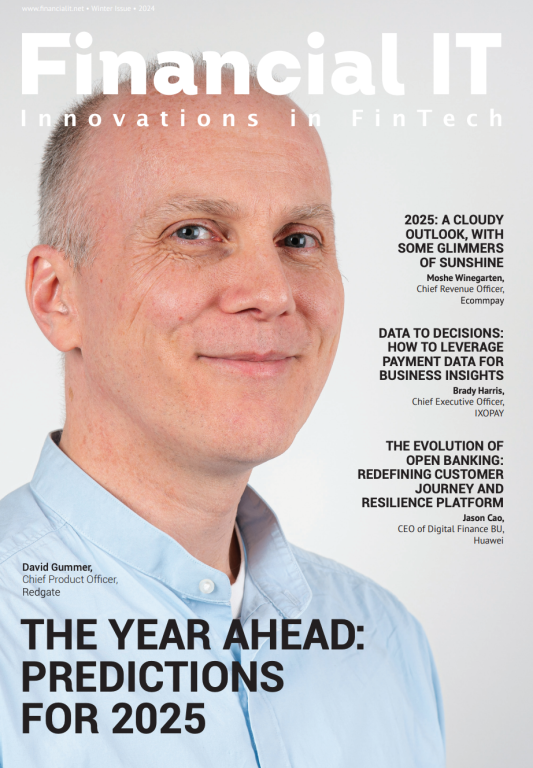Trends Accelerating Biometric Payment Card Adoption

- Michel Roig, President of Payment & Access at Fingerprint Cards
- 02.11.2022 10:45 am #payments
The growth of contactless biometric payment cards has gained even more momentum in 2022. With recent launches in Morocco, and more on the horizon, it is an exciting time for the technology. But what external factors are driving this trend and why should the payments industry take note?
Mandates and mobiles
Changes in payment technology have seen cards overtake cash as the most popular method for in-store purchases. According to Fingerprints’ research, cards account for 73% of in-store payments globally, with 50% of these being contactless. However, when it comes to protecting in-store payments, there is a growing gap between security and convenience with the rise of contactless.
This contrasts with digital payments, where we’ve seen a global trend of evolving banking regulations to support innovation and security. For example, Strong Customer Authentication (SCA), a requirement of the Second Payments Services Directive (PSD2), has come into play in Europe.
This evolving security ecosystem around digital payments has spiked interest in biometric payment cards. With SCA, customers need two of the three forms of authentication to make an online purchase (something they know such as a password; have such as a card or phone; or are such as a fingerprint). Biometric payment cards offer this level of authentication too, so it makes sense to harmonize the security between online and in-store payments with biometrics.
Having become a de-facto authentication method for accessing and unlocking smartphones, the role of biometrics in mobiles has evolved significantly to support SCA-compliant payments and, increasingly, know-your-customer and ID verification. But, the use of smartphones to make in-store purchases is also growing, and there are set to be 4.4 billion digital wallet users by 2025. But not everyone wants to, or can use, a mobile wallet and consumers will always use contactless cards as a backup in an increasingly cashless society.
Biometrics offers synergy for contactless in-store payments. Consumers should expect the same level of security in all the devices they use, whether a mobile phone or payment card. The mobile industry set the standard, integrating biometrics into the payment experience offering SCA with every transaction. It is up to banks to demand this innovation for cards, since consumers are expecting it and also the same level of SCA can be included in their card-based offerings. Card issuers should be implementing the innovative and secure feature as part of their standard offering.
Lingering worries about contactless fraud
For in-store contactless card payments, SCA requirements are met through a chip-and-PIN input when reaching spending limits. But does this adequately respond to consumer needs? Our research shows that significant concerns exist around contactless payment security.
Although 77% of consumers use contactless regularly, half are worried about the lack of security if their card is lost or stolen and around a quarter are confused about spending limits. One example of where these concerns have materialized is in the UK, which in October 2021 increased its contactless payment limit from £45 to £100 – making it the highest in Europe.
To help prevent contactless cards from becoming a ‘thief’s dream’, some banks allowed consumers to control limits. Some consumers were only too willing to do this. According to Lloyds Bank, more than 800,000 customers have set alternative limits (with 60% opting for a cap of less than £50) or deactivated contactless entirely. Increasing limits without considering appropriate security mechanisms run the risk of card technology regressing.
With biometric payment cards, consumers can experience both security and convenience for in-store contactless transactions as only the authorized user can make purchases, while also benefiting from no spending cap.
A blossoming Fintech ecosystem
Banks have traditionally dominated the financial services industry, yet the digital revolution and increasing cashless opportunities have allowed a new type of challenger to enter the market – financial technology companies, or fintechs.
The fintech business model that underpins customer attractiveness relies heavily on differentiating from banks through offering value-added services, such as metal or eco-friendly cards. This means that the fintech ecosystem often sits at the forefront of innovation. The focus among fintechs to offer next-gen customer experiences means that biometric payment cards present a big opportunity.
Our research has found that 51% of consumers are willing to switch banks to receive a biometric payment card, and 43% are willing to pay to receive one. This customer acquisition opportunity is one some fintechs have already identified and leveraged. By offering consumers a seamless and secure contactless user experience that isn’t currently widely available at traditional banks, fintechs will become an attractive prospect for consumers. We expect the fintech trend to continue growing and with it to announce further fintech partnerships in the coming year.
Keep an eye on DeFi
And it’s not only ‘traditional’ finance that is benefitting.
Cryptocurrencies have experienced a tremendous spike in popularity in recent years, with an estimated 106 million people worldwide using crypto exchanges today. Typically, those who use cryptocurrencies do so for high volume and value transactions, with the average Bitcoin transaction value being US$25,000 as of 2020.
Much like any financial technology, security is essential. Currently, the main way to store, access and manage crypto (exchanges, hot and cold wallets), is with a private key. But what happens if a user forgets their private key, or worse, it becomes compromised?
Introducing biometric authentication to help us store and access cryptocurrency makes sense. It can provide an additional layer of security to cryptocurrency storage and authentication, and progress is already being made in this space, championed by some of the tech industry’s most recognizable names.
An exciting time for biometrics
With the clear need for security that does not compromise convenience, the desire among consumers for the technology, and the readiness of the technology for mass rollout, the coming years look exciting for biometrics. With biometric payment cards, issuers can deliver for their customers a truly unified, smarter payment experience, unlocking the same level of security without sacrificing convenience.


























